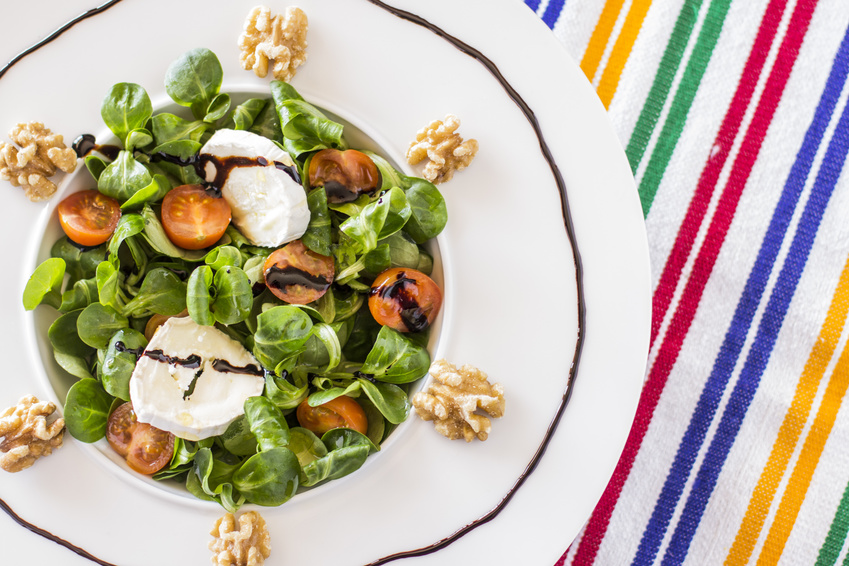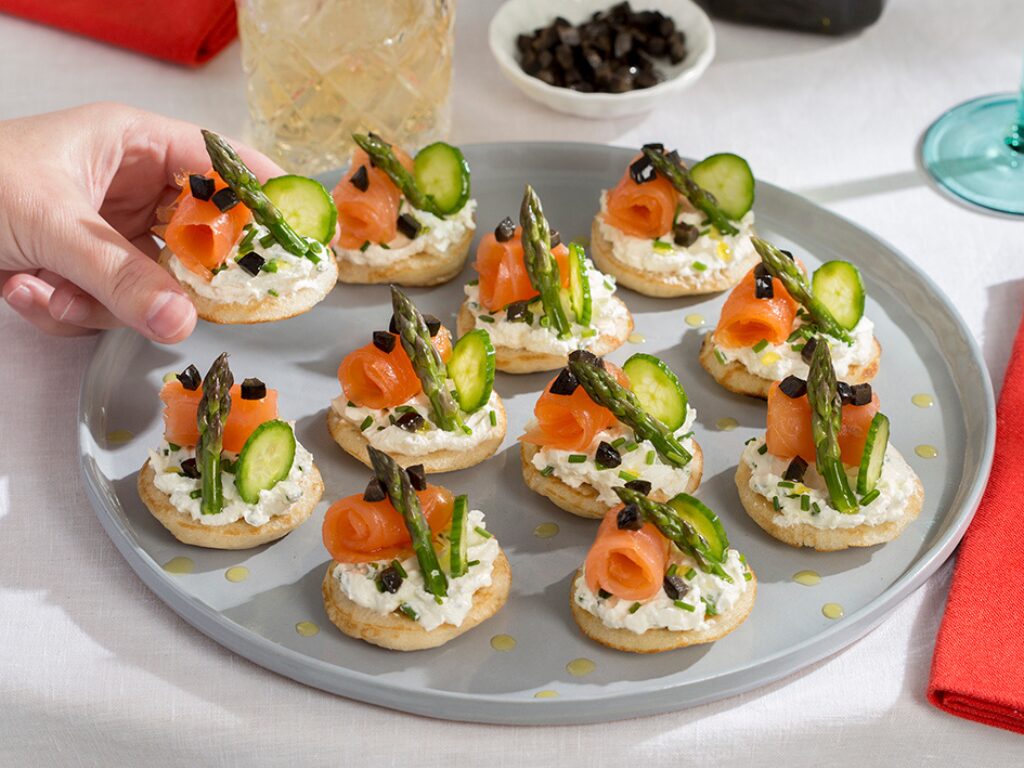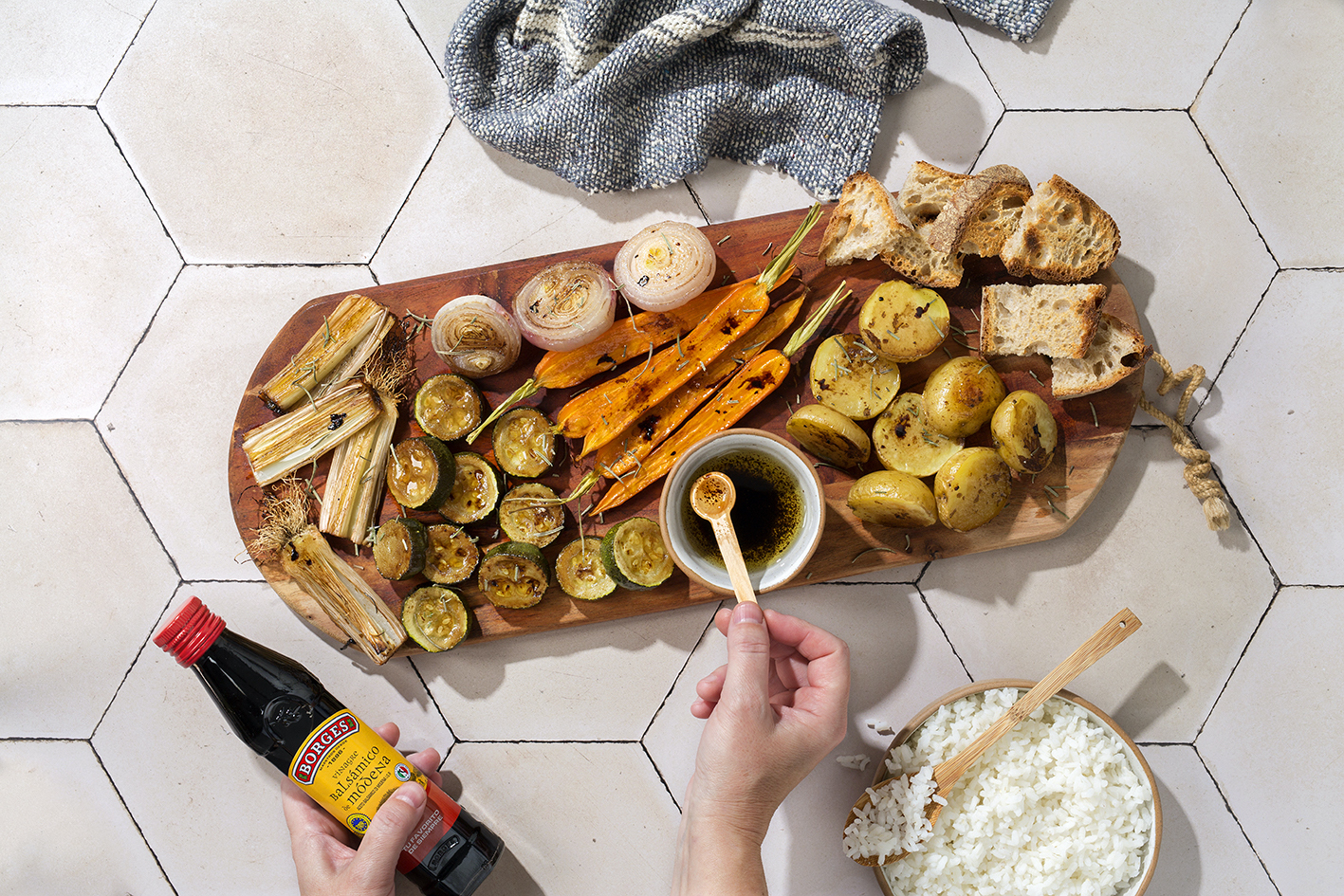If you think salads are boring because a mixed salad is as far as your expertise stretches, these tips are for you. A little inspiration for a healthy, fresh and always tempting summer dish.
1. We love green but… a bit more variety wouldn’t go amiss. Do you always use iceberg lettuce in your salads? Well, start by being a bit more adventurous with your basic salad leaves: try spinach (baby spinach is best), watercress, lettuce hearts, cos, mixed leaves, rocket, red cabbage, lamb’s lettuce, endive… The same goes for tomatoes: make the most of the huge range of different varieties on offer rather than always using the same.
2. The world of vinaigrettes. It’s one thing to add olive oil, vinegar and salt to a salad separately and quite another to make a vinaigrette by lovingly mixing the ingredients together in a bowl beforehand. This simple touch will make your salads that much tastier. You can create a basic vinaigrette as follows: one tablespoonful of extra-virgin olive oil, one teaspoonful of vinegar, and salt and pepper to taste.
Try different kinds of vinegar and see what you think of the result: balsamic vinegar (available in thicker, sweeter gourmet versions, and as a white vinegar), sherry vinegar, cava vinegar, honey vinegar, vinegar with essence of tarragon… Another option is to use a balsamic glaze, which will thicken your vinaigrette to a sauce-like consistency. Really lazy (or practically minded) cooks can use ready-made vinaigrettes containing soya, nuts or mustard, among others. Each one will give your salad a different lift.
3. Infinity and beyond. Open your mind: there’s more to the world of salads than lettuce and tomato. Pulses such as beluga lentils, rice, quinoa, couscous, potatoes, any kind of short pasta and stir-fried vegetables (boiled and stir-fried green beans or wafer-thin grated raw courgette) are all excellent bases for creating a cold salad.
For example: cooked, cooled quinoa, chunks of red, yellow and green pepper, finely chopped onion, feta cheese, cherry tomatoes and sliced, pitted olives. Serve with balsamic vinaigrette.
4. Add fruit. In pieces or in a vinaigrette. Melon balls, apple chunks, sliced strawberries, peach or nectarine segments… go perfectly with any green base and a good balsamic vinegar, especially a balsamic glaze. If you’re not a great fan of adding fruit, make sure you’ve got a good stock of fruit balsamic glazes in your kitchen: you can find them with raspberry, apple, mango… and they’ll give your salad that special touch you were looking for!
Here’s one idea: mixed vegetables, sliced peaches, a handful of cubed Cheddar cheese, chopped nuts, balsamic glaze, extra-virgin olive oil and a pinch of salt and pepper. Out of peaches? Use some mango balsamic glaze instead.
5. Other toppings. There are other ingredients besides fruit that will give your salads an original touch. Popular options are tuna, the wide variety of different cheeses (there’s bound to be one that you haven’t yet tried in a salad), croutons, sweetcorn (loose or as small cobs), cucumber, celery, avocado, seaweed, peppers, carrot, mushrooms, chicken, ham, raw or smoked fish, prawns… Let your imagination run wild and use your common sense to create your own innovative options.
6. Fruits, nuts and seeds: great allies. Walnuts, cashews, almonds, pistachios, hazelnuts, raisins, dried apricots, pitted plums, pine nuts, pumpkin seeds, sesame seeds, poppy seeds… Don’t forget these great ingredients when preparing your salads. A suggestion: baby spinach, crumbled blue cheese, a handful of pistachios and balsamic vinaigrette.
7. The final touch. Chives, fennel, parsley, mint, spearmint, coriander, basil… Put the finishing touch to your salad with your herb of touch and enjoy!


